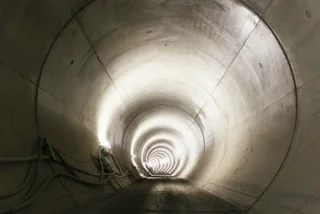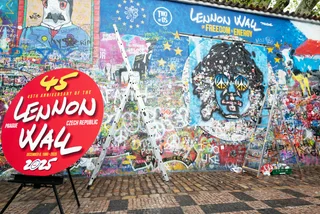Friday, November 17 – A Student Protest Is Brutally Suppressed By Police
The chain of events that would become known as the Velvet Revolution began in the afternoon of Friday, November 17, when a large group of students staged a demonstration in Prague. Estimated crowds of between 10,000-15,000 students attended a memorial service at the Slavín cemetery at Vyšehrad, where they commemorated the murder of student Jan Opletal by the Nazis and celebrated World Students’ Day.
During the course of the demonstration, there were calls for the democratization of Czechoslovakia and the resignation of the General Secretary of the Czechoslovak Communist Party, Miloš Jakeš.
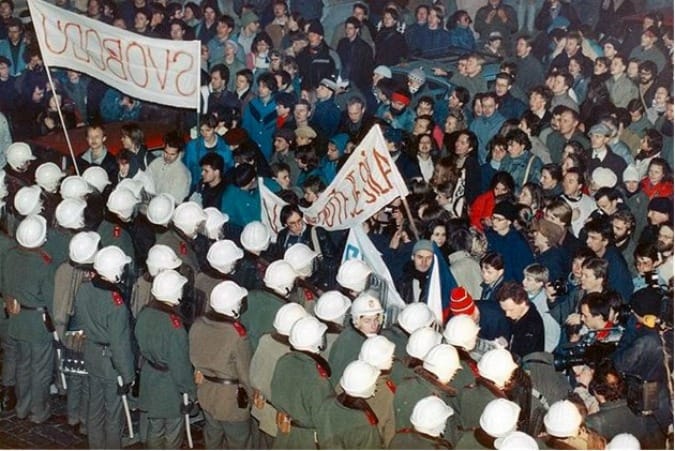
The demonstrators then decided to move the protest to Wenceslas Square. They descended from Vyšehard towards the city center, following the river. By this point, the crowd on the march had begun to swell and it is estimated that as many of 55,000 students were in the protest as it turned up Národní Třída (National Avenue), where they were met by a barricade of riot police. After an hour-long peaceful standoff, the police were given the order to break up the march.
The students at the head of the march were then brutally assaulted by police, who forced them through gauntlets, beating them over the heads as they fled. By the end of the attack, Národní Třída was a mess of blood and abandoned clothes, and rumors were beginning to circulate that the beating had been so bad that it had caused fatalities.
Saturday, November 18 – Students and Actors Call For a General Strike
On Saturday morning, the students began calling for a general strike in response to their treatment by police. They attracted the sympathy of many actors and theatre directors, who gave over their theatres to them that evening. Instead of performances, audiences were treated to proclamations of a strike notice by students.
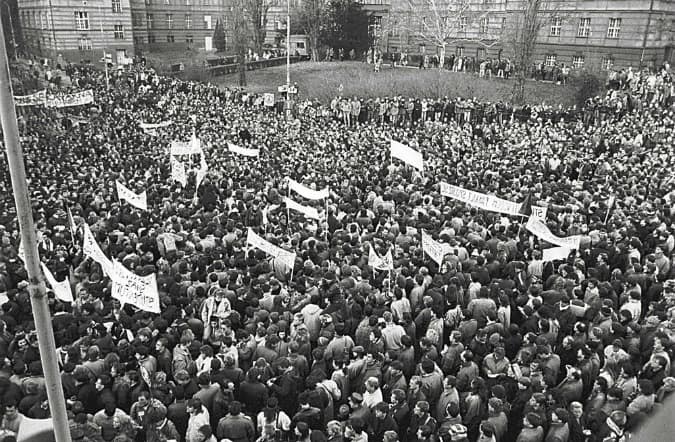
The theatre strike spread across the country. These theatre spaces would prove vital over the days that followed, as they functioned as spaces for students, dissents and the public to communicate without government censorship.
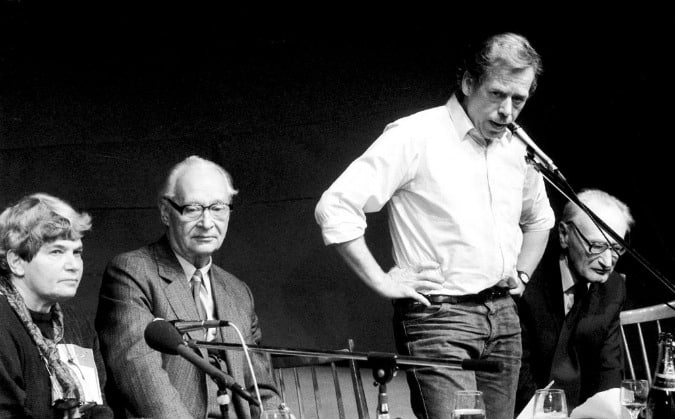
On that same afternoon, the first spontaneous gathering of students and citizens began on Wenceslas Square.
Sunday, November 19 – The Civic Forum Is Formed
On Sunday, November 19, Václav Havel became a founding member of the Civic Forum, the newly established opposition organization. The Civic Forum chose the Laterna Magica theatre as their headquarters.
The Civic Forum declared themselves not to be a political party, but rather to be “simply an open association of those who feel responsible for the positive resolution of the present unbearable political situation, who want to unite the strength of all decent and democratically thinking citizens, artists, students, workers, all people of good-will.”
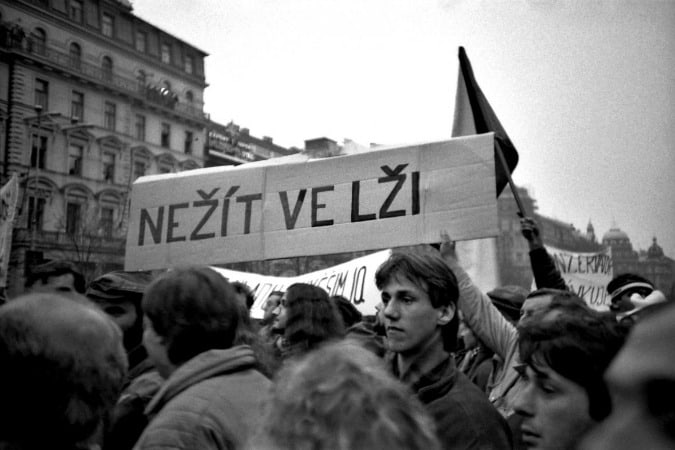
Amongst their stated aims were demands for the resignation of President Gustav Husák, the removal of the head of Prague Communist Party, and an investigation into the police action against the student protest. The Civic Forum also announced its support for a general strike that was being promoted by the students, scheduled for Monday, November 27.
That evening, a large crowd manifested on Karlovo Náměstí and several thousand demonstrators marched towards the Castle, but they were blocked by police.
Monday, November 20 – The First Massive Demonstration on Wenceslas Square
On Monday afternoon, almost 200,000 demonstrators gathered on Wenceslas Square to listen to speakers from the Civic Forum address them from the base of the statue of St. Wenceslas. This gathering led to another attempted march to the Castle, which was again broken up by police.
In Bratislava, democratic activists formed a Slovak counterpart for the Civic Forum. The group was called the Public Against Violence.

On Tuesday afternoon, more than 200,000 people were addressed by Civic Forum from the balcony of the Melantrich building, the headquarters of the Czechoslovak Socialist Party (now Marks & Spencer on Wenceslaus Square). The Socialist Party’s newspaper was notable because it had broken government censorship. Similar sized crowds would gather under the balcony during the days that followed, eager to hear any updates on news of talks between the Civic Forum and the government.
Friday, November 24 – Alexander Dubček Appears on the Balcony
On Friday afternoon, an exciting moment occurred when the waylaid hero of the 1968 Prague Spring, Alexander Dubček, appeared on the Melantrich balcony in the company of Havel. The meeting broke up with chants of “Dubček to the Castle” and calls for another mass demonstration on the larger Letná plain.
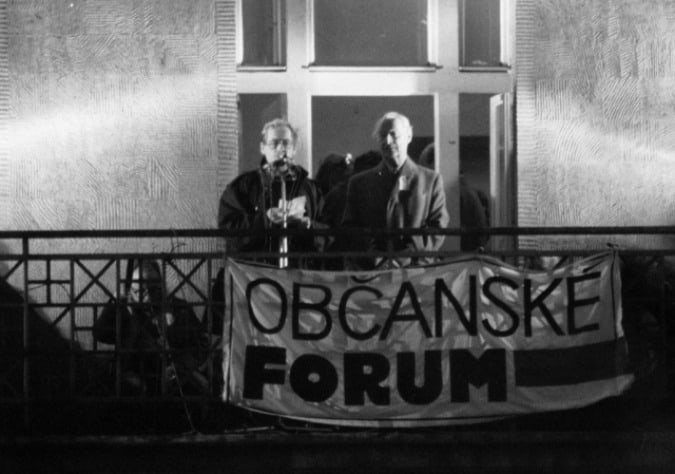
Elsewhere, Miloš Jakeš, the General Secretary of Communist Party resigned.
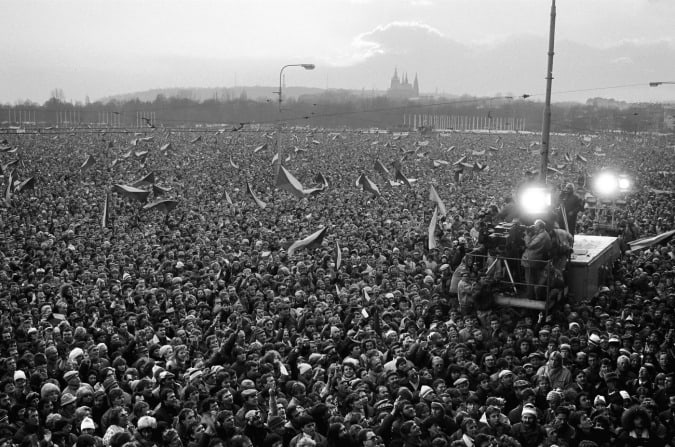
Sunday, November 26 – The Crowd Swells and the Protest Moves to Letná Plain
By Sunday, the numbers of demonstrators had exceeded the capacity of Wenceslas Square, and so the gathering moved to Letná Plain. Half a million people attended this massive demonstration. This time the crowd were addressed by the Prime Minister Ladislav Adamec.
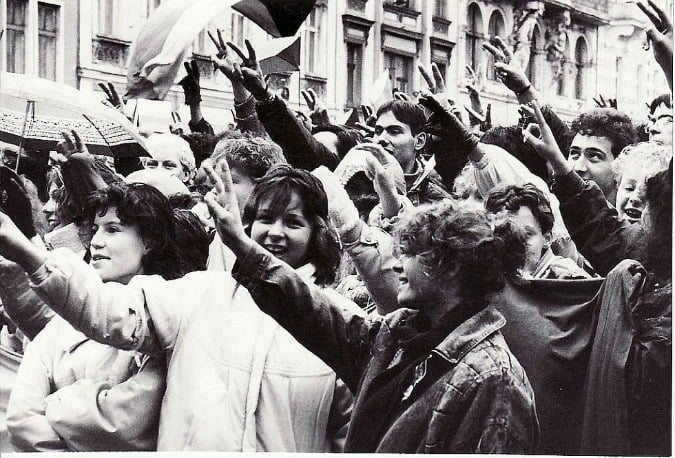
Monday, November 27 – A Two-Hour Symbolic General Strike Takes Place
Both the government the Communist party had labored in vain to undermine the strike with promises of dialogue and concerns about lost production, but the Civic Forum produced an ingenious solution:
The strike would be a two hour, symbolic strike. It would take place at midday and students volunteered to man crucial shift work and emergency services, so that production and public safety would not suffer.
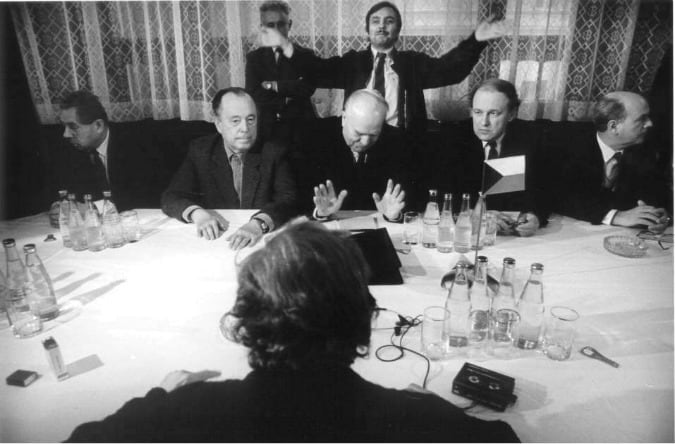
The strike action was successful – over 50% of the entire population stopped working, with another 25% supporting the strike and 10% prevented from doing so. The overwhelming support for, and success of, the strike showed that the regime lacked all legitimacy.
Tuesday, November 29 – The Communist Party Remove their Special Position from the Constitution
The Federal Assembly removed the constitutional guarantee of the “leading role” of the Czechoslovak Communist party. After ten days of non-violent protest, the Party had lost their stranglehold on the Czechoslovak state.
For a full list of events commemorating November 17 in Prague and beyond, see here.
Czech reflect on their memories of the final days of communism here.
Marcus Bradshaw is an Irish tour guide living in Prague. He is the founder of The Naked Tour Guide, a company offering history walks in the Czech capital.











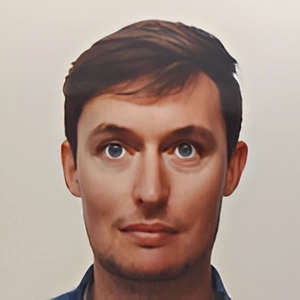
 Reading time: 5 minutes
Reading time: 5 minutes 











